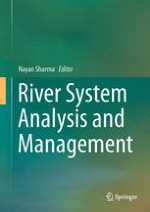2017 | OriginalPaper | Buchkapitel
3. On the Physical and Operational Rationality of Data-Driven Models for Suspended Sediment Prediction in Rivers
verfasst von : Nick J. Mount, Robert J. Abrahart, Christian W. Dawson
Erschienen in: River System Analysis and Management
Verlag: Springer Singapore
Aktivieren Sie unsere intelligente Suche, um passende Fachinhalte oder Patente zu finden.
Wählen Sie Textabschnitte aus um mit Künstlicher Intelligenz passenden Patente zu finden. powered by
Markieren Sie Textabschnitte, um KI-gestützt weitere passende Inhalte zu finden. powered by
